A review of literature read over two years
- Tutorial
Hi Habra! When I was just starting to do web development, I could not even imagine how much literature I needed to read and how much knowledge I needed to become a normal specialist. In addition, the sphere is constantly changing, and knowledge is becoming obsolete.
 For me, the problem was that I do not like to read, and I regard reading exclusively as an inevitable work that needs to be done to get material out of print. But it so happened that you have to read to improve your skills. I set the norm for myself - one book per month. On the one hand, it’s not enough, on the other hand, it’s a lot (if you really stick to the plan). Well, since I have to read forcibly, this should give some benefit. Each book is a torment, and I see no reason to waste time on literature, which will not give me anything after. Therefore, each time, getting into the bookstore and holding the next book, I ask myself the question: “Why ?! What is the use of these pieces of paper ?! What am I doing here ?! ” So you don’t waste time on books that seem useless to me, I decided to write a short review of the literature I read over two years and other sources of knowledge found. All the material below is somehow related to web development and its various aspects. Only those books that I have read are described below. I don’t cite those books that I didn’t master / read (for example, about NodeJS and a couple of frameworks).
For me, the problem was that I do not like to read, and I regard reading exclusively as an inevitable work that needs to be done to get material out of print. But it so happened that you have to read to improve your skills. I set the norm for myself - one book per month. On the one hand, it’s not enough, on the other hand, it’s a lot (if you really stick to the plan). Well, since I have to read forcibly, this should give some benefit. Each book is a torment, and I see no reason to waste time on literature, which will not give me anything after. Therefore, each time, getting into the bookstore and holding the next book, I ask myself the question: “Why ?! What is the use of these pieces of paper ?! What am I doing here ?! ” So you don’t waste time on books that seem useless to me, I decided to write a short review of the literature I read over two years and other sources of knowledge found. All the material below is somehow related to web development and its various aspects. Only those books that I have read are described below. I don’t cite those books that I didn’t master / read (for example, about NodeJS and a couple of frameworks).
Let's start with the main representatives of the genre.
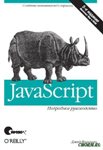
Total: 982 pages / average design
A very thick book that describes what, how and why it works. It may not make sense to read it, because There was an alternative from Ilya Kantor.
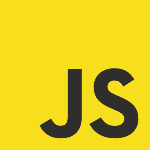
Actually, an alternative to David Flanagan. Everything is written and about everything. It is read in two / three stages - the first time you understand the basics of JavaScript, and the second time you realize all its subtleties. Honestly, I so often turn to the reference information on this site that I can’t even imagine the Internet before it.
The following is a series of books that all JavaScript developers have read. Books should not be read because they have specific thoughts, but because they teach how to write in JavaScript. They examine design patterns and explain the essence of various libraries. It is these books that teach you to think like a web developer. I can’t say that these are excellent books, mostly they are rather good, but they are all required to be read.
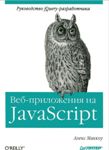
Key Thoughts:
Total: 1000 rub. / 300 pages / average design / normal book The
word MVC is written throughout the contents, although the book is more about modules and a modular approach. Much has been written about the events, but rather reference information. There are many references to jQuery, and indeed the author superficially runs through different libraries, explaining how they appeared and why they were needed. At the end of the book is an application that, for example, has a CSS3 reference. One gets the feeling that the author strove to finish the book with text to the desired volume.
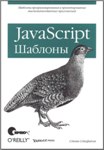
Total: 900 rubles. / 200 pages / average design / normal book
The book is entirely about OOP in JavaScript. And of course there are such topics as: currying, facade, proxy object, strategy, decorator, iterator, etc. The book is unlikely to ever become obsolete, as based on algorithms, but they do not change. Of the minuses - this is the experience of readers. Many of the techniques described in the book, in practice appear only in complex projects. In order to make a business card for Horns and Hooves LLC, such knowledge is certainly not needed.
Well, just a list of what looked more or less good against the general background of books, on a bookshelf in a store.

Key Thoughts:
Total: 500 rub. / 200 pages / average design / was satisfied
Well, here many will say that the book is already for those who are just starting to program. I do not agree. Of course, Java lovers will choose Pure Code. Creation, analysis and refactoring ”(Martin R.), but web developers often do not even follow the basic principles. For example, constant abbreviations btn instead of button and the like. And articles in the style of Armin Ronacher “Stop being cute and smart” (Stop Being Cute and Clever, http://habrahabr.ru/post/205616/ ) would not have appeared. One of the most memorable examples from the book for me was the example of reducing nesting:
Very often, jQuery enthusiasts greatly increase their nesting. And the fact of the appearance of the “Q” library for NodeJS ( https://github.com/kriskowal/q ) is rather a negative indicator for me. Why? If you have one function performing one task, the fact of the appearance of multiple nesting is unlikely.
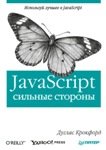
Total: 250 rubles. / 250 pages / average design / excellent reference book
Many are in the title of the book “Strengths”, although the book itself does not have these strengths.
In fact, this is a kind of reference, in which most JavaScript objects are described more or less briefly.
Such a guide is good to scroll through before an interview or to recall rarely used methods. And so, Ilya Kantor to help you.

Total: 500 rubles. / 170 pages / average design / normal reference book The
book was given at the conference. At first I thought - the next selection of copyright, but, as it turned out, this is a completely normal reference. All examples are illustrated, the author writes briefly and on the case, there is no water. Very similar to the book “JavaScript Strengths”, only in terms of CSS3.
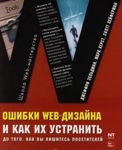
Key thoughts:
Total: 170 rubles. / 200 pages / cheap design / excellent book
At first glance, the book did not inspire confidence, but I was very pleased. No water. For each advice, three or four good and bad examples. All examples with screenshots and a short description. The main idea is “safe design”. Teaches you how to prevent user errors. It can be used as a checklist before the site surrenders. Even though all the tips are pretty beaten up, however, most programmers shouldn't. In the book, one feels a look not from the programmer's side, but from the specialist in resolving conflict situations.
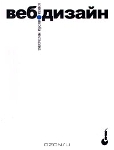
Total: I don’t know the price / 500 pages / average design / meaningless
On the one hand, the content of the book as a whole is no longer relevant, on the other hand, the text is mostly water. Perhaps all green students should be quick to go through the sections. As in any "book about the web" intuitive things are painted:
Even though it’s Jacob Nielsen himself, I won’t recommend it.
At work, I constantly made comments about the lack of a “sense of beauty”, so I decided to go through the design:
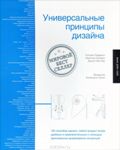
Key Thoughts:
Total: 1 200 rub. / 250 pages / excellent design / excellent book
At first the price confused, but after reading it was ready to give three times as much. There is no water in the book. Each principle is described very briefly, clearly and accurately. Always with examples and links to the work of other authors in this area. Each advice ends with a reference to another book or series of books in which a particular topic is disclosed more widely. Tips cover a wide range of design areas, from interface design to typography rules.

Key Thoughts:
The book, in fact, is a collection of copyright on the topic "How to determine the problem" and "Where to get ideas." A lot of words, pictures and commonplace stamps. It is interesting to flip through it, but it does not carry residual knowledge. When I bought it, I was led to the "Study of the place" section. It dealt with the placement of billboards and information signs in various buildings. This topic has been interesting to me since my training at PR, but books on the topic did not come across. However, one cannot say here that the author has revealed this topic. Rather, he slightly lifted the veil.
Total: 800 rub. / 200 pages / excellent design / I do not recommend buying
It seems that in this book I got another interesting idea - you need to be slightly interested in everything in a variety of areas, so that you can borrow ideas from someone else's field. That is, if the ideas are over, it is worthwhile to take up a completely different direction of activity and, perhaps, you will have new ideas.
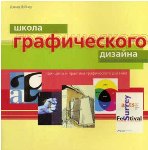
Key Thoughts:
Total: 750 rub. / 200 pages / great design / medium, lots of water
Quite a strange book. It seems that a lot has been written, but again there is little residual knowledge. It could be attributed to another banal copyright, but the book draws out a section on fonts and page layout methods, using the text itself as a decoration. In any case, she is not worth her money. And about fonts - it is better to read with Innokenty Keleinikov in the book "Book Design: from words to deeds."
The books “Universal Design Principles” and “Web Design Errors” help to understand how to design a system so that people make as few mistakes as possible, as well as how to minimize the negative consequences of errors if they did occur.
Impressed by these books, he decided to cover the acquired knowledge with training courses on design. Normal courses cost at least 30,000 rubles. and stretched over time for six months. I decided to save (and regretted). I chose two training centers, costing an average of 9,000 rubles. for a course length of 1.5 months.

What is taught: Corel, Photoshop
What I learned:
What does the design have to do with it? I do not know. Teachers just show how to click on buttons. Although there were positive points. The Corel course took apart colors and prepress. This is much wider than the articles on the Internet that I read before. There were a lot of things on the Photoshop course, but the memory left was the decomposition of colors by channels (RGBA) and the benefits of color grading. They showed how to add “+ 20% warmth and comfort” and “+ 17% to the volume and depth of the picture." In general, it was worth it. And at interviews, questions about PNG are often encountered, which require a little more knowledge than “cutting the layout”.

What I learned:
Photoshop is Photoshop, and you need to learn to draw. Therefore, I thought that drawing courses pump this skill. But in fact it was not worth it. Minus 9,000 rubles. and time. It seems to me that there was a problem in the teacher. The courses were very similar to school art. You come, draw a cube for two hours, and in your head there is only one question: “And what ?!”. No techniques and techniques, no explanations, only constant drawing of squares, circles and still lifes. Residual knowledge is zero. Therefore, if you go to pencil drawing, ask about the curriculum and what residual knowledge you will have.
But back to programming.
When I started writing games in JavaScript, I asked my colleagues what they could advise. Advised the following book:
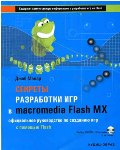
Total: 250 rubles. / 600 pages / poor design / one of the best books I've read
At first, the phrase macromedia Flash MX in the title of the book was frightening, but I was mistaken. I can’t single out the main thoughts, because the book is built more like a textbook. The whole book is one big thought. The author talks about various game genres, explains why trigonometry is needed and how collision physics is calculated. It runs through optimization methods, shows how to use the "grid" to simplify physical calculations, lists the types of AI and talks about the path search algorithm. The author also describes the stages of designing a game, improving graphics, the principles of creating isometric worlds, overlay and the role of sound in games. In general, the book expands consciousness and makes you look at games differently. Unlike other authors (for example, Rafaelo Cecco), Job Makar practically does not write code in the book. Sometimes, of course, he writes, but not enough. Job explains how and why, it looks into the essence, and how you implement it in code is beyond the scope of the book. The secrets of game development is one of those books that are more about algorithms and ideas than about code.
When I was looking for information about the book, I came across such an article http://www.8bitrocket.com/tag/electrotank/ . Therefore, before buying, check whether his next masterpieces have been translated into Russian or not. It might be better to buy them, as the author himself writes that he had little time to work on the book "Secrets of game development on macromedia Flash MX" and he is not very pleased with its quality.
After reading the masterpiece above, I began to look for information on game development and accidentally stumbled upon a Russian guy named Andrey Korotkov. Andrei has a YouTube channel, where he gradually lectures on how to write games and create game engines http://www.youtube.com/user/megadrone86/videos . Yes, this is not JavaScript, this is C ++. But it does not matter, because the essence of the lecture is ideas and algorithms.
Key thoughts:
But, like Job Makar, here the main thoughts are blurred. Lectures need to be fully understood. each lecture tells about specific problems and how to solve them.
Actually, after reading these two authors, I began to write my own game engine. When the engine was brought to some stage, when the result was already visible, an unexpected problem surfaced. All the levels that I tried to create were, to put it mildly, unplayable. I began to look for information about the architecture of levels on the Internet and came across another wonderful Russian author.

Misha writes a series of articles that are gradually being formed into a book. Everything is short, clear and well structured, each article is supported by a bunch of examples. You can get acquainted with the book here ( http://pro.level-design.ru/ ). I read excitedly.
Following previous examples, trust and respect for Flash developers has skyrocketed. It became obvious that they know a lot, they have a lot of experience and it is time to adopt it. Yes, now many moan here and there on the Internet that Flash is dying, Flash sucks, etc., but! The Flash community has a great deal of casual gaming experience. This should not be neglected. With these thoughts in mind, I bought the next book on Flash.

The main idea - hmm ... did not catch.
Total: 800 rub. / 300 pages / great design / water but beautiful
Pretty weird book. It seems that a lot has been written, but there is little residual knowledge. Everything, in principle, is pretty commonplace. Another selection of tips on how to make sites correctly and beautifully. Maybe someone will be interested, but I was not. Most of the book is easily overlapped by experience in any advertising agency that stamps one-time sites and promotes them. In defense of the author, I can only cite the section "Advertising games and applications." The author tells how to use a game to hammer a brand of a company into the brain of players. So, if you need to convince Ivan Ivanovych from Horns and Hooves LLC to buy a mini-game development for the site, read this section of the book.

The first chapter describes the unfolding of loops and shows graphs of the speed of work before and after in different browsers. Further, the author explains how to work with CSS sprites (he writes a function that gradually changes the background-size). Tells about the error of the timers. Well, then the work begins with tiles and water on the topic of writing the game. If work with tiles can, in principle, be mastered, because Like everything is true, then an example of a game (painted on a half-book) is horror. After the book by Job Makar and lectures by Andrey Korotkov, I really want to shout: “Stop Rafael! Do not do that! It is not scalable! Rafik, I swear by mom, you're wrong! ”
Total: 800 rub. / 250 pages / medium design / water
This is another “must read” book for web developers. The standard animal on the cover, the standard narration. But against the background of previous authors, after reading the book I want to say: “And what ?! Raffaello, where are the algorithms? ” On the one hand, the book runs through the new HTML5 API, on the other hand, all cheap copyrighted books run through it. Trouble with residual knowledge and conclusions. The author cites canvases of code that are not needed, but inflate the thickness of the book, abundantly filling everything with paste on the topic "there is such a library." In defense of the author, you can bring the chapter "Using vectors in games and computer models." For some reason, no one bothers to disassemble it in the style of "for dummies." But then again - where are the projections of the vectors?

This is an Internet resource, in contrast to previous books about the game system, finally, it covered the topic of counting collisions (collisions). Here http://noregret.org/tutor/n/collision/ authors (Raigan Burns, Mare Sheppard) wrote something that Raffaele Cecco did not master in his book. The bottom line: the side of the polygon is a vector. Make a projection of this and another vector on the coordinate plane. If the projections intersect, we have a collision. If the vectors are at an angle, make their projections onto the normals on each other.
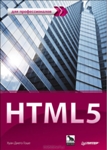
Total: 710 RUB / 500 pages / poor design / I do not recommend buying
This is a very thick HTML5 API reference. As a guide - so-so, just a selection of water and copyright. The thickness of the book here is clearly not consistent with the quality. Find something thinner.
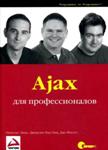
Total: 1000 rubles. / 500 pages / poor design / excellent book
Book - fire! Perhaps not everyone read it, but it is definitely worth reading. Authors gradually introduce asynchronous operation and tricks in older browsers. I can’t highlight key thoughts, because the book must be taken in its entirety. One of the examples discussed in the book is the principle of how hints work when entering into the search bar.

Key Thoughts:
Total: 950 rub. / 350 pages / average design / average quality, not enough information
A lot of water, constant grinding of the same thoughts. Although, on the other hand, these thoughts now seem obvious, and at the time of writing, they were not. The book may seem outdated because now it’s like web 2.0 and all the tips described in the book are already applied in practice. But I do not agree. Every day on the Internet I see a huge number of sites that do not follow these tips.
In general, the text has a lot of interweaving with the books “Web Design Errors” and “Universal Design Principles”
As I wrote above, a web developer must know a lot in different areas. Here are two other areas that will help make the site for people, not programmers: typography and public relations.
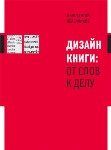
What is the book about:
Key thoughts:
Total: 800 rub. / 300 pages / excellent design / excellent book
I bought it almost immediately, because when scrolling, I got the following text:
Beating with spaces:
Do not beat with a space:
It seemed perfect to me. Everything is short, clear, understandable and point by point. After reading the book, I was pleased with the result. A lot of interweaving with the “Covodstvo” by Tyoma Lebedev. Another impetus for the purchase of this book was the previous work in an advertising agency. There they constantly kicked for the jambs in the text on the sites, for “instead of”, for +79112223344 instead of +7 (911) 222-33-44, for N instead of No., for - instead of -.
After reading this book, the feeling and understanding of typography became better .
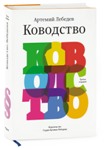
Total: 2300 rub. / 450 pages / excellent design / excellent book
Honestly, I didn’t buy it, but read it on the Internet. There is no water in the text. It’s worth it because there are thoughts, conclusions and the author’s view. All these things do not age. Even if the person Lebedev annoys you, it does not mean anything. Here is an example article about the photo http://www.artlebedev.ru/kovodstvo/sections/169/ , a logical conclusion. Every time I come across a design on Bootstrap, the brain gives out http://www.artlebedev.ru/kovodstvo/sections/147/ because Bootstrap sites are usually primitive.

Total: 300 rub. / 350 pages / average design / excellent book
One of those books, by reading which you can understand the essence of the PR profession. Probably, many will now say: "What kind of heresy for the humanities do you advise ?!" In fact, the book clearly sets out the essence of the PR profession and is closely related to the book “Readable Code or Programming as an Art” (Dustin Boswell, Trevor Foucher). The last one was a tip: "the best code is the one that doesn't exist." Just this tutorial helps to understand that very often your customers don’t need a website at all. So, there is no point in doing it. Moreover, you begin to pay attention to the ways the software product enters the market and you realize that it’s all very bad with PR promotion, which means it won’t go and you won’t get money for it, which means there’s no point in writing it.
Yandex lectures help you look at many things differently. But then again, it all depends on the speakers. In any case, I learned a lot from myself. The most significant video for me at the moment is Misha Davydov about the pattern of the mediator ( http://tech.yandex.ru/events/yasubbotnik/chlb-feb-2012/talks/154/ ). Vadim Makeev’s speeches are also encouraging, any of them at the moment, perhaps, about CSS frameworks ( http://pepelsbey.net/2008/04/css-frameworks/ ).
Why I don’t cite as an example the Western analogues of video lectures, which had been posted on the Habrir before:
Number or paper.
Whenever possible, I buy all books in paper form. In electronic for some reason I can’t read. And when they stand on a shelf and constantly catch their eye, they can simply be taken and scrolled. And even when familiar developers come, you can get a book from the shelf and give them in your hands with the words: “This one is here!”
Why books should be re-read:
The amount of information is quite large. All principles and advice are gradually forgotten. From time to time, you need to refresh your memories by simply scrolling through the books you have already read. Reading and using by default are two different things. Many read about Russian quotation marks “but often continue to use standard ones.” Many read about modularity, but continued to write “noodles,” etc.
PS: I am waiting for the throw-in of Alan Cooper's book “On the Interface” from UI specialists. I have not read it yet, so there is no description. As well as the stuffing of the famous in narrow circles Ogilvy “On Advertising” on the topic covered in the book “Flash Advertising”
 For me, the problem was that I do not like to read, and I regard reading exclusively as an inevitable work that needs to be done to get material out of print. But it so happened that you have to read to improve your skills. I set the norm for myself - one book per month. On the one hand, it’s not enough, on the other hand, it’s a lot (if you really stick to the plan). Well, since I have to read forcibly, this should give some benefit. Each book is a torment, and I see no reason to waste time on literature, which will not give me anything after. Therefore, each time, getting into the bookstore and holding the next book, I ask myself the question: “Why ?! What is the use of these pieces of paper ?! What am I doing here ?! ” So you don’t waste time on books that seem useless to me, I decided to write a short review of the literature I read over two years and other sources of knowledge found. All the material below is somehow related to web development and its various aspects. Only those books that I have read are described below. I don’t cite those books that I didn’t master / read (for example, about NodeJS and a couple of frameworks).
For me, the problem was that I do not like to read, and I regard reading exclusively as an inevitable work that needs to be done to get material out of print. But it so happened that you have to read to improve your skills. I set the norm for myself - one book per month. On the one hand, it’s not enough, on the other hand, it’s a lot (if you really stick to the plan). Well, since I have to read forcibly, this should give some benefit. Each book is a torment, and I see no reason to waste time on literature, which will not give me anything after. Therefore, each time, getting into the bookstore and holding the next book, I ask myself the question: “Why ?! What is the use of these pieces of paper ?! What am I doing here ?! ” So you don’t waste time on books that seem useless to me, I decided to write a short review of the literature I read over two years and other sources of knowledge found. All the material below is somehow related to web development and its various aspects. Only those books that I have read are described below. I don’t cite those books that I didn’t master / read (for example, about NodeJS and a couple of frameworks).Book Evaluation Criteria:
- The amount of code. The more code in the book, the worse it is. This means that the author gives meaningless listings of programs instead of describing in words the algorithm of work.
- The thickness of the book. The thicker the book, the worse. Most likely, it will be difficult to read to the end. Why did she become fat?
- Because there is a lot of water.
- Because the author does not know how to express his thoughts briefly and clearly.
- Because the author works at any university, so writing a thin book is not serious: colleagues from the department will laugh, so he is still fanning with meaningless inserts.
- Illustration. The fewer the illustrations, the worse the book. The same information presented in graphical and textual form is more easily perceived in graphical form. The depth of information processing also plays a role. Text with an illustration is perceived better than text without an illustration. The presence of high-quality illustrations shows that the author worked on the book "with the soul."
- Design and layout. Good design speeds up reading and allows you to better absorb information. This item includes compliance with the rules of typography, layout and structuring of information.
- A good book is easy to read: eyes should not be tired, and pages should be pleasant to the touch (in this regard, glossy publications for designers are, of course, beyond competition). High-quality design, again, shows that they worked on the book “with a soul”.
- Ideas, not methods. A good book should teach that it will not become obsolete in the next few years, or even more. For the rest, articles in relevant publications are suitable. Why pay 1000 rubles. for a book about the API of the next fashionable framework that everyone will forget about in six months? It is better to read about the ideas that the authors embodied in the framework, about what they wanted, how they achieved it, what they came to. How architecture was designed and why exactly.
Let's start with the main representatives of the genre.
JavaScript: A Comprehensive Guide
(JavaScript: Definitive Guide. David Flanagan)
Total: 982 pages / average design
A very thick book that describes what, how and why it works. It may not make sense to read it, because There was an alternative from Ilya Kantor.
Modern JavaScript tutorial
Website: JavaScript.ru
Actually, an alternative to David Flanagan. Everything is written and about everything. It is read in two / three stages - the first time you understand the basics of JavaScript, and the second time you realize all its subtleties. Honestly, I so often turn to the reference information on this site that I can’t even imagine the Internet before it.
The following is a series of books that all JavaScript developers have read. Books should not be read because they have specific thoughts, but because they teach how to write in JavaScript. They examine design patterns and explain the essence of various libraries. It is these books that teach you to think like a web developer. I can’t say that these are excellent books, mostly they are rather good, but they are all required to be read.
JavaScript web applications
(JavaScript Web Applications. Alex MacCaw)
Key Thoughts:
- Beat everything on modules and encapsulate (function () {...}) ();
- To make a call chain, return the object you are working with
- Use libraries
Total: 1000 rub. / 300 pages / average design / normal book The
word MVC is written throughout the contents, although the book is more about modules and a modular approach. Much has been written about the events, but rather reference information. There are many references to jQuery, and indeed the author superficially runs through different libraries, explaining how they appeared and why they were needed. At the end of the book is an application that, for example, has a CSS3 reference. One gets the feeling that the author strove to finish the book with text to the desired volume.
Javascript Patterns
(JavaScript Patterns. Stoyan Stefanov)
Total: 900 rubles. / 200 pages / average design / normal book
The book is entirely about OOP in JavaScript. And of course there are such topics as: currying, facade, proxy object, strategy, decorator, iterator, etc. The book is unlikely to ever become obsolete, as based on algorithms, but they do not change. Of the minuses - this is the experience of readers. Many of the techniques described in the book, in practice appear only in complex projects. In order to make a business card for Horns and Hooves LLC, such knowledge is certainly not needed.
Well, just a list of what looked more or less good against the general background of books, on a bookshelf in a store.
Readable Code or Programming as an Art
(The Art of Readable Code (Theory in Practice). Dustin Boswell, Trevor Foucher)
Key Thoughts:
- One function - one task
- Full variable names
- Break long expressions into short ones
- Highlight Code Blocks
Total: 500 rub. / 200 pages / average design / was satisfied
Well, here many will say that the book is already for those who are just starting to program. I do not agree. Of course, Java lovers will choose Pure Code. Creation, analysis and refactoring ”(Martin R.), but web developers often do not even follow the basic principles. For example, constant abbreviations btn instead of button and the like. And articles in the style of Armin Ronacher “Stop being cute and smart” (Stop Being Cute and Clever, http://habrahabr.ru/post/205616/ ) would not have appeared. One of the most memorable examples from the book for me was the example of reducing nesting:
function(name, age) {
if(!name || !age) return false;
...
}
function(name, age) {
if(name && age) {
...
}
}
Very often, jQuery enthusiasts greatly increase their nesting. And the fact of the appearance of the “Q” library for NodeJS ( https://github.com/kriskowal/q ) is rather a negative indicator for me. Why? If you have one function performing one task, the fact of the appearance of multiple nesting is unlikely.
JavaScript strengths
(JavaScript: The Good Parts. Douglas Crockford)
Total: 250 rubles. / 250 pages / average design / excellent reference book
Many are in the title of the book “Strengths”, although the book itself does not have these strengths.
In fact, this is a kind of reference, in which most JavaScript objects are described more or less briefly.
Such a guide is good to scroll through before an interview or to recall rarely used methods. And so, Ilya Kantor to help you.
CSS3 Developer Guide
(The Book of CSS3: A Developer's Guide to the Future of Web Design. Peter Gasston)
Total: 500 rubles. / 170 pages / average design / normal reference book The
book was given at the conference. At first I thought - the next selection of copyright, but, as it turned out, this is a completely normal reference. All examples are illustrated, the author writes briefly and on the case, there is no water. Very similar to the book “JavaScript Strengths”, only in terms of CSS3.
Web Design Mistakes or How to Fix Them Before You Lose Visitors
(Defensive Design for the Web. Matthew Linderman, Jason Fried).
Key thoughts:
- The error message should be visible.
- Use color, conditional icons, and text to clearly identify the problem area.
- Always label errors in the same way.
- The error message should be clear.
- Do not use a language that is not understood by your customers.
- The text should be short and clear.
- Excusable tone
- Work with the form:
- Select required and optional fields
- Accept input in all common formats
- Let's get input examples, lists, tips
- Clearly set the character limit
- If some options are not available to the client - do not offer them
- Check input as quickly as possible
- Remove the “Clear” button and make it inaccessible after clicking the “Send” button
- Save information
- Work on page 404
- Redirect partially invalid URLs
- Offer an alternative version of information and update information for older browsers
- Answer questions on the same page
- Create a Help Section
- Provide multiple support options
- Reply to e-mail quickly and informatively
- Remove unwanted ads
- Better fast than beautiful
- Do not force to register
- Remove unnecessary navigation
- Search Help:
- Clearly explain why no search results were found or inaccurate matches were shown
- Predict common mistakes and show the right result
- Give the opportunity to filter the results
- Advise on how to improve your search results.
- If the product is available later, explain when
- Offer Email Notification
- Analyze server logs
- Study appeals in those. the support
- Analyze competitors
Total: 170 rubles. / 200 pages / cheap design / excellent book
At first glance, the book did not inspire confidence, but I was very pleased. No water. For each advice, three or four good and bad examples. All examples with screenshots and a short description. The main idea is “safe design”. Teaches you how to prevent user errors. It can be used as a checklist before the site surrenders. Even though all the tips are pretty beaten up, however, most programmers shouldn't. In the book, one feels a look not from the programmer's side, but from the specialist in resolving conflict situations.
Web design
(Designing Web Usability: The Practice of Simplicity. Jakob Nielsen)
Total: I don’t know the price / 500 pages / average design / meaningless
On the one hand, the content of the book as a whole is no longer relevant, on the other hand, the text is mostly water. Perhaps all green students should be quick to go through the sections. As in any "book about the web" intuitive things are painted:
- Best Sites - Fast
- Texts: brevity, literacy, clarity, etc.
- Make a normal menu
- Make normal URLs
- Test for errors
- Use alt for images
Even though it’s Jacob Nielsen himself, I won’t recommend it.
At work, I constantly made comments about the lack of a “sense of beauty”, so I decided to go through the design:
Universal design principles.
(Universal Principles of Design. W. Lidwell, K. Holden and J. Butler)
Key Thoughts:
- A high percentage of results in any large system depends on a low percentage of variables
- Objects and environments should be designed so that the maximum number of people can use them without modification
- Designs that are attractive in terms of aesthetics seem easier to use than unattractive
- The appearance of the object should suggest how to use it.
- People find more attractive forms that resemble a person or have anthropomorphic characteristics.
- Align objects in the center of mass.
- A landscape-rich environment reduces stress, improves focus and concentration
- Using Information Blocks
- Itten's color scheme
- Prevention of unintentional actions by their preliminary verification
- The system is more convenient to use when the same elements are presented in the same way.
- Boundary method for operations that can be performed on a system
- The tendency to give preference to objects with smooth contours, rather than with sharp corners or pointed elements
- The level of control provided by the system should correspond to the skills and abilities of its user (expert / normal mode)
- Information Processing Depth
- Consensus Based Design
- Traces of use or wear indicate methods of interaction with the object or environment that the user prefers
- There should always be an entry point
- Accidents are the result of design errors. Action and inaction leading to an unintentional result.
- The use of elements in larger quantities than necessary in order to compensate for the influence of unknown variables and prevent system failure
- Figure / Background Ratio
- The time required to move the pointer over the target is a function of the size of the target and the distance to it (Fitts law)
- As the flexibility of the system increases, its practicality decreases.
- An ordered sequence of people reacting to acute stress
- The quality of the system output depends on the quality of the input.
- Gutenberg chart (eye movement on the page)
- The time required to make decisions increases with the number of alternatives (Hick's law)
- Do not fill in empty spaces due to fear of emptiness. Minimalism in design.
- Use pictograms in the interface for better recognition and recall
- Effects of slowing down information processing due to a conflict of psychological processes.
- The method of presenting information in order of decreasing importance.
- The modular principle of managing a complex system.
- Means of predicted change in behavior without limiting options or significant changes in incentives.
- Pictures are remembered better than words.
- Signal noise. The ratio of relevant to irrelevant information displayed.
- Identical elements are perceived as more interconnected.
- The system becomes more convenient in operation when its purpose and methods of use are clearly distinguishable.
- Using a weak element that fails to protect other elements from accident.
- etc.
Total: 1 200 rub. / 250 pages / excellent design / excellent book
At first the price confused, but after reading it was ready to give three times as much. There is no water in the book. Each principle is described very briefly, clearly and accurately. Always with examples and links to the work of other authors in this area. Each advice ends with a reference to another book or series of books in which a particular topic is disclosed more widely. Tips cover a wide range of design areas, from interface design to typography rules.
Graphic design from idea to implementation
(Graphic Design Thinking (Design Briefs). Ellen Lupton, Jennifer Cole Phillips)
Key Thoughts:
- Draw associative cards of your ideas
- Conduct interviews with clients, maybe they need something completely different
The book, in fact, is a collection of copyright on the topic "How to determine the problem" and "Where to get ideas." A lot of words, pictures and commonplace stamps. It is interesting to flip through it, but it does not carry residual knowledge. When I bought it, I was led to the "Study of the place" section. It dealt with the placement of billboards and information signs in various buildings. This topic has been interesting to me since my training at PR, but books on the topic did not come across. However, one cannot say here that the author has revealed this topic. Rather, he slightly lifted the veil.
Total: 800 rub. / 200 pages / excellent design / I do not recommend buying
It seems that in this book I got another interesting idea - you need to be slightly interested in everything in a variety of areas, so that you can borrow ideas from someone else's field. That is, if the ideas are over, it is worthwhile to take up a completely different direction of activity and, perhaps, you will have new ideas.
School of graphic design. The principles and practice of graphic design.
(Graphic Design School: The Principles and Practices of Graphic Design. David Dabner)
Key Thoughts:
- Parsing fonts
- Analysis of colors and shades (the author skipped the color scheme of Itten)
- You can give the text block a different shape and use the text itself as a page decoration
Total: 750 rub. / 200 pages / great design / medium, lots of water
Quite a strange book. It seems that a lot has been written, but again there is little residual knowledge. It could be attributed to another banal copyright, but the book draws out a section on fonts and page layout methods, using the text itself as a decoration. In any case, she is not worth her money. And about fonts - it is better to read with Innokenty Keleinikov in the book "Book Design: from words to deeds."
The books “Universal Design Principles” and “Web Design Errors” help to understand how to design a system so that people make as few mistakes as possible, as well as how to minimize the negative consequences of errors if they did occur.
Impressed by these books, he decided to cover the acquired knowledge with training courses on design. Normal courses cost at least 30,000 rubles. and stretched over time for six months. I decided to save (and regretted). I chose two training centers, costing an average of 9,000 rubles. for a course length of 1.5 months.
Graphic design

What is taught: Corel, Photoshop
What I learned:
- RGBA, CMYK - what is the difference and how did it appear
- What problems can arise in the press
- How to create volume and glass effect with gradients
- How to create volume through blur and transparency
- How to cut a complex object
- How to "add comfort", etc.
What does the design have to do with it? I do not know. Teachers just show how to click on buttons. Although there were positive points. The Corel course took apart colors and prepress. This is much wider than the articles on the Internet that I read before. There were a lot of things on the Photoshop course, but the memory left was the decomposition of colors by channels (RGBA) and the benefits of color grading. They showed how to add “+ 20% warmth and comfort” and “+ 17% to the volume and depth of the picture." In general, it was worth it. And at interviews, questions about PNG are often encountered, which require a little more knowledge than “cutting the layout”.
Academic drawing and painting course (pencil drawing)

What I learned:
- The line thickness on one side of the picture should be less, this will give the illusion of light falling
Photoshop is Photoshop, and you need to learn to draw. Therefore, I thought that drawing courses pump this skill. But in fact it was not worth it. Minus 9,000 rubles. and time. It seems to me that there was a problem in the teacher. The courses were very similar to school art. You come, draw a cube for two hours, and in your head there is only one question: “And what ?!”. No techniques and techniques, no explanations, only constant drawing of squares, circles and still lifes. Residual knowledge is zero. Therefore, if you go to pencil drawing, ask about the curriculum and what residual knowledge you will have.
But back to programming.
When I started writing games in JavaScript, I asked my colleagues what they could advise. Advised the following book:
Secrets of developing games on macromedia Flash MX
(Flash MX 2004 Game Design. Jobe Makar)
Total: 250 rubles. / 600 pages / poor design / one of the best books I've read
At first, the phrase macromedia Flash MX in the title of the book was frightening, but I was mistaken. I can’t single out the main thoughts, because the book is built more like a textbook. The whole book is one big thought. The author talks about various game genres, explains why trigonometry is needed and how collision physics is calculated. It runs through optimization methods, shows how to use the "grid" to simplify physical calculations, lists the types of AI and talks about the path search algorithm. The author also describes the stages of designing a game, improving graphics, the principles of creating isometric worlds, overlay and the role of sound in games. In general, the book expands consciousness and makes you look at games differently. Unlike other authors (for example, Rafaelo Cecco), Job Makar practically does not write code in the book. Sometimes, of course, he writes, but not enough. Job explains how and why, it looks into the essence, and how you implement it in code is beyond the scope of the book. The secrets of game development is one of those books that are more about algorithms and ideas than about code.
When I was looking for information about the book, I came across such an article http://www.8bitrocket.com/tag/electrotank/ . Therefore, before buying, check whether his next masterpieces have been translated into Russian or not. It might be better to buy them, as the author himself writes that he had little time to work on the book "Secrets of game development on macromedia Flash MX" and he is not very pleased with its quality.
Lectures by Andrey Korotkov
After reading the masterpiece above, I began to look for information on game development and accidentally stumbled upon a Russian guy named Andrey Korotkov. Andrei has a YouTube channel, where he gradually lectures on how to write games and create game engines http://www.youtube.com/user/megadrone86/videos . Yes, this is not JavaScript, this is C ++. But it does not matter, because the essence of the lecture is ideas and algorithms.
Key thoughts:
- Write a diz. doc
- Think about the concept of the game as a whole
- The engine must consist of modules
But, like Job Makar, here the main thoughts are blurred. Lectures need to be fully understood. each lecture tells about specific problems and how to solve them.
Actually, after reading these two authors, I began to write my own game engine. When the engine was brought to some stage, when the result was already visible, an unexpected problem surfaced. All the levels that I tried to create were, to put it mildly, unplayable. I began to look for information about the architecture of levels on the Internet and came across another wonderful Russian author.
Level design. Theory and practice
Mikhail Kadikov
Misha writes a series of articles that are gradually being formed into a book. Everything is short, clear and well structured, each article is supported by a bunch of examples. You can get acquainted with the book here ( http://pro.level-design.ru/ ). I read excitedly.
Following previous examples, trust and respect for Flash developers has skyrocketed. It became obvious that they know a lot, they have a lot of experience and it is time to adopt it. Yes, now many moan here and there on the Internet that Flash is dying, Flash sucks, etc., but! The Flash community has a great deal of casual gaming experience. This should not be neglected. With these thoughts in mind, I bought the next book on Flash.
Flash advertisement
(Flash Advertising: Flash Platform Development of Microsites, Advergames and Branded Applications. Jason Fincanon)
The main idea - hmm ... did not catch.
Total: 800 rub. / 300 pages / great design / water but beautiful
Pretty weird book. It seems that a lot has been written, but there is little residual knowledge. Everything, in principle, is pretty commonplace. Another selection of tips on how to make sites correctly and beautifully. Maybe someone will be interested, but I was not. Most of the book is easily overlapped by experience in any advertising agency that stamps one-time sites and promotes them. In defense of the author, I can only cite the section "Advertising games and applications." The author tells how to use a game to hammer a brand of a company into the brain of players. So, if you need to convince Ivan Ivanovych from Horns and Hooves LLC to buy a mini-game development for the site, read this section of the book.
Javascript graphics
(Supercharged JavaScript Graphics: with HTML5 canvas, jQuery, and More. Raffaele Cecco)
The first chapter describes the unfolding of loops and shows graphs of the speed of work before and after in different browsers. Further, the author explains how to work with CSS sprites (he writes a function that gradually changes the background-size). Tells about the error of the timers. Well, then the work begins with tiles and water on the topic of writing the game. If work with tiles can, in principle, be mastered, because Like everything is true, then an example of a game (painted on a half-book) is horror. After the book by Job Makar and lectures by Andrey Korotkov, I really want to shout: “Stop Rafael! Do not do that! It is not scalable! Rafik, I swear by mom, you're wrong! ”
Total: 800 rub. / 250 pages / medium design / water
This is another “must read” book for web developers. The standard animal on the cover, the standard narration. But against the background of previous authors, after reading the book I want to say: “And what ?! Raffaello, where are the algorithms? ” On the one hand, the book runs through the new HTML5 API, on the other hand, all cheap copyrighted books run through it. Trouble with residual knowledge and conclusions. The author cites canvases of code that are not needed, but inflate the thickness of the book, abundantly filling everything with paste on the topic "there is such a library." In defense of the author, you can bring the chapter "Using vectors in games and computer models." For some reason, no one bothers to disassemble it in the style of "for dummies." But then again - where are the projections of the vectors?
Flash Collected

This is an Internet resource, in contrast to previous books about the game system, finally, it covered the topic of counting collisions (collisions). Here http://noregret.org/tutor/n/collision/ authors (Raigan Burns, Mare Sheppard) wrote something that Raffaele Cecco did not master in his book. The bottom line: the side of the polygon is a vector. Make a projection of this and another vector on the coordinate plane. If the projections intersect, we have a collision. If the vectors are at an angle, make their projections onto the normals on each other.
HTML5
(HTML5 for Masterminds. JD Gauchat)
Total: 710 RUB / 500 pages / poor design / I do not recommend buying
This is a very thick HTML5 API reference. As a guide - so-so, just a selection of water and copyright. The thickness of the book here is clearly not consistent with the quality. Find something thinner.
Ajax for professionals
(Professional Ajax. Nicholas C. Zakas, Jeremy McPeak, Joe Fawcett)
Total: 1000 rubles. / 500 pages / poor design / excellent book
Book - fire! Perhaps not everyone read it, but it is definitely worth reading. Authors gradually introduce asynchronous operation and tricks in older browsers. I can’t highlight key thoughts, because the book must be taken in its entirety. One of the examples discussed in the book is the principle of how hints work when entering into the search bar.
Web Interface Design
(Designing Web Interfaces. Bill Scott, Theresa Neil)
Key Thoughts:
- Suggest editing an object near it
- Add Drag and Drop
- Prevent page transitions
- Add animated effects. This will make the interface more lively.
- Increase interface response speed
Total: 950 rub. / 350 pages / average design / average quality, not enough information
A lot of water, constant grinding of the same thoughts. Although, on the other hand, these thoughts now seem obvious, and at the time of writing, they were not. The book may seem outdated because now it’s like web 2.0 and all the tips described in the book are already applied in practice. But I do not agree. Every day on the Internet I see a huge number of sites that do not follow these tips.
- The “Without leaving the page” section, as it were, reinforces the book “Web Design Errors” (Matthew Linderman, Jason Fried). Only in this book a practical implementation is described: overlays, inlays, virtual pages.
- The “Easy Touch” section is justified in the book “Universal Design Principles” (W. Lidwell, K. Holden and J. Butler)
In general, the text has a lot of interweaving with the books “Web Design Errors” and “Universal Design Principles”
As I wrote above, a web developer must know a lot in different areas. Here are two other areas that will help make the site for people, not programmers: typography and public relations.
Book Design: From Words to Deeds
Innokenty Keleinikov
What is the book about:
- Grid. Modular grid.
- Text design and font analysis
Key thoughts:
- Everything that is placed on the grid looks better
- Background and font should contrast
- A line of no more than 70 characters, the text is divided into paragraphs, large font
- Avoid frequent use of secretions
- If you make columns, make sure that the rows in different columns match in height
- Divide the text into main, auxiliary, etc.
- The text should be such that you can quickly go over it and catch the essence
Total: 800 rub. / 300 pages / excellent design / excellent book
I bought it almost immediately, because when scrolling, I got the following text:
Beating with spaces:
Do not beat with a space:
- periods and commas from the previous text;
- ellipsis, as a pause sign, from the previous or next word
- a short dash between the numbers, indicating the limits of any value, for example: 20-30 people;
- hyphen between words and hyphenation
- quotation marks from the words enclosed in them
- ...
It seemed perfect to me. Everything is short, clear, understandable and point by point. After reading the book, I was pleased with the result. A lot of interweaving with the “Covodstvo” by Tyoma Lebedev. Another impetus for the purchase of this book was the previous work in an advertising agency. There they constantly kicked for the jambs in the text on the sites, for “instead of”, for +79112223344 instead of +7 (911) 222-33-44, for N instead of No., for - instead of -.
After reading this book, the feeling and understanding of typography became better .
Kovodstvo
Artemy Lebedev
Total: 2300 rub. / 450 pages / excellent design / excellent book
Honestly, I didn’t buy it, but read it on the Internet. There is no water in the text. It’s worth it because there are thoughts, conclusions and the author’s view. All these things do not age. Even if the person Lebedev annoys you, it does not mean anything. Here is an example article about the photo http://www.artlebedev.ru/kovodstvo/sections/169/ , a logical conclusion. Every time I come across a design on Bootstrap, the brain gives out http://www.artlebedev.ru/kovodstvo/sections/147/ because Bootstrap sites are usually primitive.
Theory and practice of public relations. Textbook for high schools
Kochetkova A.V., Filippov V.N., Skvortsov Y.L., Tarasov A.S.
Total: 300 rub. / 350 pages / average design / excellent book
One of those books, by reading which you can understand the essence of the PR profession. Probably, many will now say: "What kind of heresy for the humanities do you advise ?!" In fact, the book clearly sets out the essence of the PR profession and is closely related to the book “Readable Code or Programming as an Art” (Dustin Boswell, Trevor Foucher). The last one was a tip: "the best code is the one that doesn't exist." Just this tutorial helps to understand that very often your customers don’t need a website at all. So, there is no point in doing it. Moreover, you begin to pay attention to the ways the software product enters the market and you realize that it’s all very bad with PR promotion, which means it won’t go and you won’t get money for it, which means there’s no point in writing it.
What else is needed for complete happiness:
- Articles on Habré
- Смотреть лекции Яндекса (http://tech.yandex.ru/education/)
- Смотреть доклады на конференциях (http://web-standards.ru/)
- Смотреть за отдельными товарищами (http://pepelsbey.net/)
Yandex lectures help you look at many things differently. But then again, it all depends on the speakers. In any case, I learned a lot from myself. The most significant video for me at the moment is Misha Davydov about the pattern of the mediator ( http://tech.yandex.ru/events/yasubbotnik/chlb-feb-2012/talks/154/ ). Vadim Makeev’s speeches are also encouraging, any of them at the moment, perhaps, about CSS frameworks ( http://pepelsbey.net/2008/04/css-frameworks/ ).
Why I don’t cite as an example the Western analogues of video lectures, which had been posted on the Habrir before:
- I don’t know English, so I don’t understand what they mean.
- Many of them are designed for entry-level, and this is no longer interesting.
- All the best, as a rule, is immediately translated into Russian.
Number or paper.
Whenever possible, I buy all books in paper form. In electronic for some reason I can’t read. And when they stand on a shelf and constantly catch their eye, they can simply be taken and scrolled. And even when familiar developers come, you can get a book from the shelf and give them in your hands with the words: “This one is here!”
Why books should be re-read:
The amount of information is quite large. All principles and advice are gradually forgotten. From time to time, you need to refresh your memories by simply scrolling through the books you have already read. Reading and using by default are two different things. Many read about Russian quotation marks “but often continue to use standard ones.” Many read about modularity, but continued to write “noodles,” etc.
PS: I am waiting for the throw-in of Alan Cooper's book “On the Interface” from UI specialists. I have not read it yet, so there is no description. As well as the stuffing of the famous in narrow circles Ogilvy “On Advertising” on the topic covered in the book “Flash Advertising”
